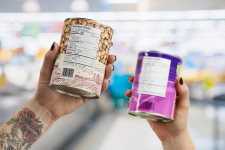Using food labels can help you compare and choose products so you can make an informed choice.
On this page
Benefits of using food labels
Food labels provide information you can use to make informed choices about foods and drinks at the grocery store and at home. Food labels can help you:
- compare and choose products more easily
- know what ingredients a food product contains
- choose products with a little or a lot of the nutrients that are of interest to you
How to use food labels
Different types of information may be available on food packages. This information can help you make informed choices about healthy and safe foods.
Nutrition facts table: provides information on serving size, calories, certain nutrients and % daily values (% DV). The % DV can be used as a guide to show you if the serving of stated size has a little or a lot of a nutrient.
- 5% DV or less is a little
- 15% DV or more is a lot
Ingredient list: lists all of the ingredients in a food product by weight. The list starts with the ingredient that weighs the most and ends with the ingredient that weighs the least.
Nutrition claims: includes nutrient content claims and health claims. All foods with a claim must meet certain criteria but some foods may not have a claim even though they meet the criteria.
Food allergen labelling: provides information to help you avoid specific food allergens or sensitivities.
Date labelling: provides information on how long your unopened food product will last and the safety of certain products. The most common types of dates are “best-before,” “packaged on” and “expiration” dates.
Further reading
- Date modified:

